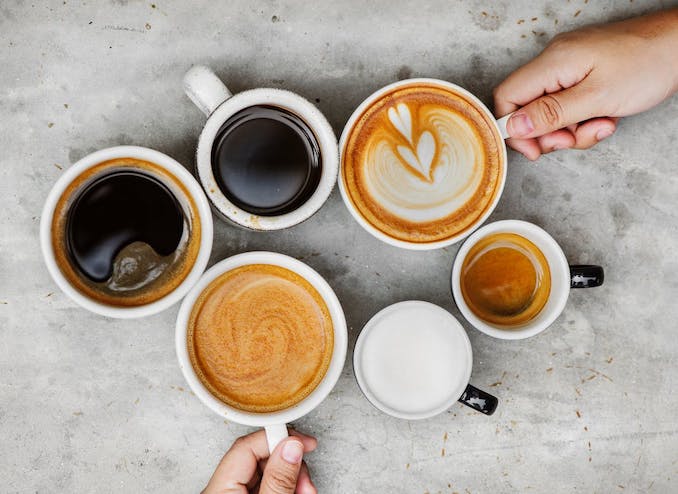We’re inside more than we’re used to, we’re doing less than we’re used to and we’re eating and drinking more than we should. No judgement here!
As you reach for coffee #11 of the morning, take heed; you might be making it wrong.
We spoke with John Kozsik, the Lavazza Australia national training manager about how to go about making your at-home brew, sans barista, as best as it can be.
A good cup of coffee has the power to shape your day – and with many now unable to lean on their favourite baristas for their go-to pick-me-up, finding that motivation to kick-start the morning can be challenging.
Whether you prefer a cappuccino or latte, flat white, espresso or long black, there is nothing better than the aroma and taste of a fresh cup of coffee.
To help bring coffee rituals back into households, we sat down with Lavazza’s coffee aficionado and National Training Manager, John Kozsik, to get his top three tips on how to make the perfect cup, in the comfort of your own home.
1. Buy a quality product
There are simple ways to identify quality coffee – and a good place to start is with packaging. Good quality packaging ensures your coffee will stay fresh for longer.
Look for non-transparent packaging with foil on the inside and make sure it has a one-way breathing valve on it. Coffee releases CO2 after it’s roasted, so a one-way valve is important, because it allows the CO2 to escape, but does not allow oxygen inside the pack to spoil the coffee.
Another way to identify quality beans is through the sense of smell. Aromas are a key sign of what our taste buds will enjoy, helping you find a coffee that you’ll love.
2. Coffee needs TLC too
While packaging is important, it’s just as important to look after your coffee once you’ve opened the packet.
To avoid oxygen getting in and making your coffee taste stale, once you’ve opened your packaging, no matter whether ground or whole beans, immediately roll up the remaining coffee tightly in the pack and secure it with an elastic band or clip. Then store in an opaque airtight container or dark jar and place in a dry and cool place – down low in the pantry is perfect! Do not refrigerate.
Coffee’s main enemies include heat, light, humidity, moisture and air, so be sure to avoid these in storage. Avoid keeping your beans in the grinder hopper for extended periods of time as this will most certainly end with a flat, flavourless espresso.
3. Don’t be afraid to spice it up
You’ll always have your favourite coffee, but with additional time at home, why not experiment with new blends or creations. You might even find something you enjoy more.
The best blends to look for at the supermarket or online include up to six different types of coffee (called ‘origins’) and can be 100% Arabica, sweet and fragrant, or a mix of Arabica and Robusta, for a full-bodied bold taste.
It’s also really easy to spice up and supercharge a regular cappuccino and convert it into a mocha. For a mocha, mix a teaspoon of chocolate powder with a little bit of hot water to make a choc sauce in a mug. Add 1 or 2 espresso shots – depending on how big your mug is. Then texture some milk and pour it into your mug. Give it a little stir and enjoy!
Enjoy the discovery process and journey of trying different coffees to become an expert in your own right!
4. My ultimate tip
For those who are time-poor and don’t want to compromise on quality, I would recommend a coffee machine.
Of course, choosing the right machine for you will come down to personal preference. For beginners, you can’t go wrong with a good quality espresso machine. Being biased, I would recommend the Lavazza Deséa which can prepare a perfect coffee at the press of a button – but of course, I encourage you to get out there and find the right machine for you.
5. Good Coffee selections
When heading to the store to buy coffee beans you want to make sure that what you’re getting is what you’ll ultimately be satisfied with. Understanding the origin of your coffee and which beans will tickle your taste buds the most can be as simple as the label on the bag. Most coffee beans are labelled Arabica because it’s the most distributed bean around the globe. However, there are at least 3 more coffee beans that could easily be found in stores and share an equal percentage of flavour and taste.
Liberica, Excelsa and Robusta are direct coffee beans widely distributed, but known for either their natural fruitiness or darker, burnt roast. Adding these to your list of coffee selections would be like going to a coffee candy store where you need to try everything at least once. If you love coffee and want variety, then keeping an eye out for these will be a great way to really get into becoming a coffee connoisseur.

